По следам Цесисских боёв
Место отдыха «Meža kaujas»
Место отдыха «Meža kaujas» находится на месте основных Цесисских сражений у моста через Амату. Посетителям предлагается рассказ о Цесисских боях и различные программы - походы и поездки на важнейшие места Цесисских боев, командные бои. После этого посетители могут отведать бодрящий «боевой суп». Железнодорожный мост через Амату сыграл очень важную роль на протяжении всего периода Войны за независимость, так как здесь произошли первые столкновения между эстонской армией и ландесвером. 5 июня 1919 года у железнодорожного моста через Амату произошел первый бой эстонских эшелонов с прибалтийским подразделением ландесвера. Ландесвер, зная, что приближается бронепоезд, заминировал железнодорожный мост и занял позицию у дома «Аматас» на берегу реки, готовый к возможным боевым действиям. Мост через Амату разделял эстонские и немецкие силы.
В ночь на 23 июня 1919 года во время Цесисских сражений ландесвер покинул Цесис и отступил к линии реки Аматы. При отступлении немцы подожгли Цесисский дом латышского общества и взорвали мост через Амату.
Железнодорожный мост через реку Рауна (Rauna)
Железнодорожный мост через Рауну находится недалеко от автомобильной дороги P20, в Приекульской волости. Его видно с правой стороны шоссе Цесис-Валмиера. Железнодорожный мост не предназначен для пешеходов, он охраняется. Каменный мост на железнодорожной линии Рига-Валка, построенный в 1889 году, является самым высоким железнодорожным сооружением в странах Балтии. Его высота 24 м, длина 78,9 м. Поезда, особенно с тяжелыми грузами, должны развивать здесь скорость до 80 км / ч. По мосту нельзя ехать быстрее, но если ехать медленнее, то поезд не сможет преодолеть небольшой уклон с обеих сторон моста и может начать скользить назад. Во время эстонско-латвийской войны за независимость в июне 1919 года через железнодорожный мост были переброшены дополнительные силы с тыла Валкского фронта в Эстонскую армию, в которую также входила северная латвийская бригада.
Когда 2-й Цесисский пехотный полк был вынужден отступить из Цесиса, его части укрепились на берегу реки Рауна. Железнодорожный мост стал частью фортификации и обеспечивал движение эстонских вооруженных поездов во время боевых действий. Во время Второй мировой войны, когда советская оккупация Латвии сменилась немецкой, 4 июля 1941 года Красная Армия отступила, и мост был взорван. В течение недели мост восстановили саперы немецкой армии. После Второй мировой войны во время советской оккупации мост через Рауну имел военно-стратегическое значение и находился под особой охраной.
Мемориальное место возле усадьбы Скангали (Skangaļi)
Мемориал, посвященный победе объединенных латвийских и эстонских войск в битве за усадьбу Скангали, находится примерно в 20 км от Цесиса. Мемориальный камень участникам Цесисской битвы и бойцам эстонского батальона Калевласте Малева был открыт 22 июня 2019 года. Победа объединенных латвийских и эстонских войск в битве за усадьбу Скангали здесь стала поворотным моментом в битвах за Цесис, в результате чего войска правительства Ниедры начали общее отступление. Правительством Андриевса Ниедры было пронемецким временным правительством Латвии, просуществовавшим с 10 мая по 26 июня 1919 года. Атака на отряд Ландесвера началась ранним утром 22 июня 1919 года, когда 3-я рота Калевласте с высадкой вооруженного эшелона ворвалась в усадьбу Скангали и захватила там 2 пушки, но противник перешел в контратаку.
Чуть позже, в середине дня, атака повторилась, и после ожесточенного рукопашного боя подразделение Ландесвера было выбито из усадьбы Скангали. В качестве трофеев были добыты пулеметы, большое количество боеприпасов и другое военное снаряжение, а через два часа эстонцы вышли на важную транспортную развязку у трактира Старти. Боевые потери Калевласте при взятии усадьбы Скангали составили 58 солдат, считая погибших и раненых. Создание мемориала было поддержано эстонской стороной.
Памятник победы в Цесисе (Cēsis)
Памятник победы латышам и эстонцам, павшим в битвах при Цесисе, находится в городе Цесисе, на площади Виенибас. В честь участников Цесисских сражений 1919 года 22 июня 1924 года на пожертвования жителей был заложен фундамент Памятника победы, по эскизу архитектора Паулса Кундзиньша. В период советской оккупации в ночь на 25 марта 1951 года памятник был взорван и полностью разрушен. С 1959 по 1990 год на бывшей площади Победы (Виенибас) находился памятник Ленину, созданный скульптором Карлисом Янсонсом. В 1997 году председателю Цесисского районного совета Марису Никласу удалось привлечь к восстановлению памятника эстонские государственные власти. Материал, необходимый для возведения памятника, - доломит с острова Сааремаа - был подарен Эстонией. 22 июня 1998 года, во время празднования 79-летия Цесисской битвы, на площади Виенибас был заложен первый камень в основание восстановленного памятника. 15 ноября 1998 года в Цесисе торжественно открыт отреставрированный Памятник победы (автор: архитектор Имантс Тимерманис). Информацию о Памятнике победы можно узнать, посетив выставку Цесисского музея истории и искусства в Новом замке «Борьба за свободу Цесиса и Латвии».
Памятник павшим в боях под Цесисом (Cēsis)
Памятник эстонским и латышским воинам, погибшим в боях под Цесисом, находится в Приекульском районе Лиепаи, примерно в 1 км к югу от железнодорожной станции Лоде, на стороне улицы Рупницас. Первый камень в фундамент памятника был заложен 22 сентября 1929 года, а сам памятник был открыт 11 августа 1935 года. Он сделан из аллажского известняка по эскизу жившего в Юлле Лиепской волости скульптора Августа Юллы - изображение крестьянина-солдата, стоящего на высоком плато, опирающегося одной рукой на плуг и поднимающего меч в другой. Для создания лица изображения использовалась маска отца скульптора Яниса Юллы. Исследователь истории Лиепской волости Айварс Вилнис заметил, что при взгляде на памятник с высоты птичьего полета его основание, тропа, ведущая к памятнику, и входная лестница образуют «стрелу» в сторону Лиепского поместья (Lindenhoff), где во время боев под Цесисом находились немецкие позиции. Конечно, сомнительно, что это связано с намерениями автора в то время, но, безусловно, обогащает наши возможности интерпретировать памятник сегодня. Рядом с памятником находится Lielā Ellīte (Liepas Ellīte, Velna ceplis) - единственные в Латвии арки из природного песчаника.
Памятник роте школьников Цесисского (Cēsis) полка
Памятник бойцам роты школьников Цесисского полка, павшим в боях под Цесисом, находится в Цесисе, недалеко от перекрестка улиц Паласта и Берзайнес. Инициатором строительства памятника выступило Общество бойцов роты школьников Цесисского полка. Памятник открыт 26 мая 1938 года. В его основе лежит идеологический эскиз бывшего солдата роты и художника Яниса Розенберга. На постаменте из известнякового камня высотой в метр установлена медная скульптура война, одетого в школьную форму, высотой 1,8 метра, созданная скульптором Рудольфом Аболтиньшем и медником Янисом Зибенсом. У ног солдата помещен символ мудрости и знаний – сова, охраняющая книги школьника, ушедшего на войну. Во время повторной коммунистической оккупации в 1952 году памятник был демонтирован, а в 1957 году недалеко от его прежнего места установили памятник скульптора Карлиса Янсонса «Флагман комсомола».
Отреставрированный памятник был открыт 11 ноября 1992 года недалеко от исторического места. В то же время в 1992 году был демонтирован памятник комсомольцам, установленный оккупационным режимом.
Бинокль виртуальной реальности "Цесисские битвы"
Цесисская битва стала одним из важнейших поворотных моментов в ходе Освободительной войны Латвии (1918–1920). 5 июня 1919 года первый этап Цесисского сражения начался со столкновения бронепоездов эстонской армии с частями ландесваров у железнодорожной станции Иерикай у моста через Амату. В ознаменование этого события рядом со станцией Иерикай был создан туристический объект, предлагающий прикоснуться к истории истории с помощью возможностей, предоставляемых современными технологиями, — с помощью виртуальной реальности. Пятиминутный ролик «БИТВА ЗА ОФИСНЫЙ МОСТ» можно смотреть бесплатно в бинокль виртуальной реальности каждый день. Продолжительность видео: 5 мин., LV с субтитрами LV, ENG, EST и EU.
Выставка Цесисского (Cēsis) музея истории и искусства в Новом замке
Цесисский музей истории и искусства расположен в самом центре Старого города Цесиса – в Новом замке. В музее действует постоянная экспозиция истории и интерьеров «Цесис - символ истории Латвии», состоящая из двух тематических частей: Экспозиция «Красно-бело-красный флаг в истории Цесиса и Латвии» знакомит с историей создания национального флага Латвии с 13 по 20 век, утвержденного как национальный символ, а также флагами батальона Латышских стрелков и традициями использования национальных цветов во время войны за независимость Латвии
Экспозиция «Борьба за свободу Латвии и Цесиса» рассказывает о формировании Цесисской роты в декабре 1918 года, истории совместных эстонско-латвийских сражений в битвах 1919 года за Цесис, когда Цесис на короткое время стал столицей Латвии, истории памятника Победы Цесиса. В квест-комнате участники игры «Легенды Цесисской битвы» должны в течение часа найти выход, решая головоломки, находя взаимосвязи и спрятанные предметы. 8 декабря 1918 года в Цесисском замке была основана одна из первых частей Латвийских вооруженных сил - Цесисская рота, которую сформировал старший лейтенант Артурс Янсонс. 8 декабря 1933 года возле Цесисского Нового замка, где располагались штаб 8-го Даугавпилсского пехотного полка и офицерский клуб гарнизона, была открыта посвященная роте памятная табличка, которую теперь можно увидеть в экспозиции музея.
Памятник солдатам Вильяндской (Viljandi) школьной роты
Памятник павшим воинам Вильяндской школьной роты в Сталбе находится на перекрестке дороги Рига-Лимбажи, поворот на дорогу Сталбе-Стуриши, ведущую к Паргауйской краевой думе (справа). Надписи на гранитном мемориале на латышском и эстонском языках: «19-21 июня 1919-го года во время битвы при Сталбе группа Вильяндской школьной роты 6-го полка отбила нападение немцев». Памятник открыт 19 июня 2009 года. Автор идеи - М. Никласс. Памятник создан каменщиком В. Колтовым. 6-й эстонский полк сражался с Прибалтийским Ландесвером и Железной дивизией во время Цесисской битвы при Сталбе. В районе усадьбы Сталбе немцы попытались прорвать линию фронта, но после двух дней безуспешных атак были вынуждены отступить. Ежегодно празднование Дня Лачплесиса в Сталбе начинается с факельного шествия к Памятнику солдатам Вильяндской школьной роты.
Лиелстраупский (Lielstraupes) замок
Лиелстраупский замок расположен в центре Страупе. Замок открыт для публики и предлагает посетителям путешествие сквозь века вместе с ориентированием в лабиринтах замка. Во время боев под Цесисом командный пункт боевой группы Железной дивизии (нем.: Eiserne Division) Пауля Людвига Эвальда фон Клейста находился в замке Лиелстраупе. Во время боев его посещали майор Бишоф, капитан Гудериан и другие. Из замка координировалось наступление в направлении Сталбе 21-22 июня. Железная дивизия была подразделением немецких наемников во время войны за независимость Латвии, сформированным из демобилизованных солдат и добровольцев 8-й армии Германской империи. Это была самая известная часть Немецкого Свободного корпуса и одно из наиболее подготовленных и боеспособных подразделений войск в Балтии в 1919 году. В советское время, с 1949 по 1959 год, в замке усадьбы располагалась и действовала администрация автомобильной тракторной станции Лиелстраупе. За это время в замке были построены учебные классы и общежития трактористов, а в бывшей конюшне усадьбы разместились мастерские. С 1963 по 2018 год замком распоряжались медицинские учреждения, а в Латвийской наркологической больнице Страупе говорили, что здесь «лечат даже стены».
Памятник воинам, погибшим в Освободительной войне Латвии
Памятник находится рядом с Limbaži Sv. Лютеранская церковь св. Иоанна, ул. Либешу 2. Здесь находится памятник павшим воинам Лимбажи и окрестностей и генерал-лейтенанту Вилису Гелбе (1890-1919), павшему в бою с немцами 19 июня 1919 г. в Видрижи.
Памятник генерал-лейтенанту Вилису Гелбе можно увидеть на Лимбажском кладбище на улице Юрас.




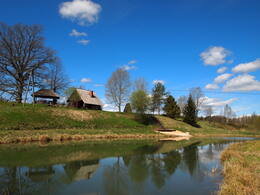
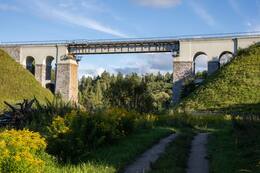
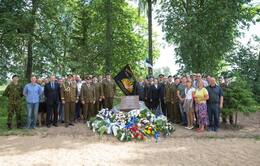
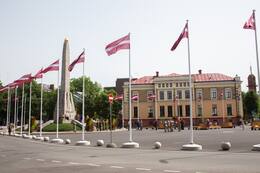
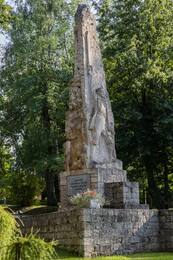
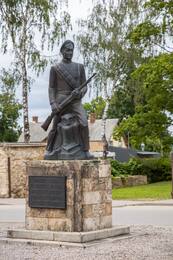
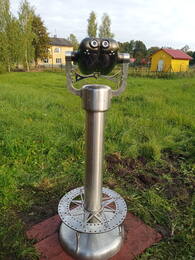
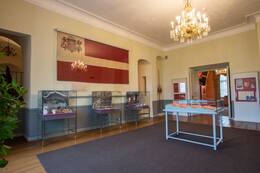
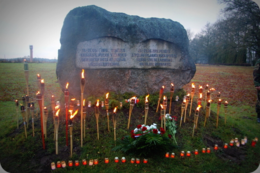
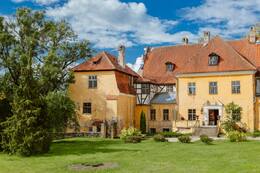
![Limbaži. Valsts prezidents J. Čakste atklāj pieminekli Limbažos I Pasaules karā kritušajiem. Latvijas Brīvības cīņu pieminekļa atklāšana [1923]. Avots: Latvijas Nacionālās bibliotēkas digitālais krājums "Zudusī Latvija".](/g/Poi/00403/44213.png?size=260)